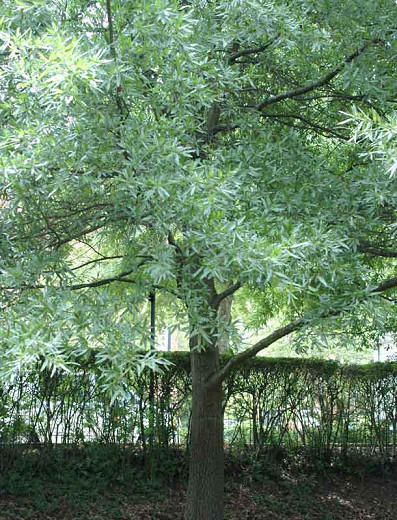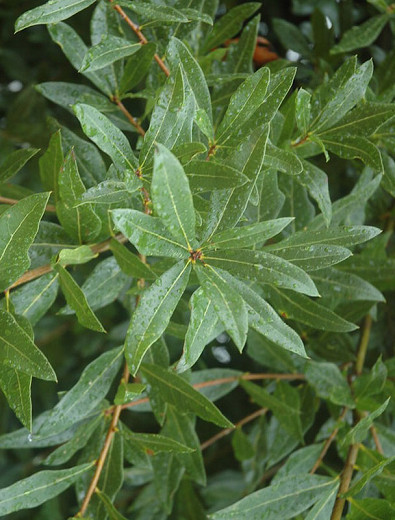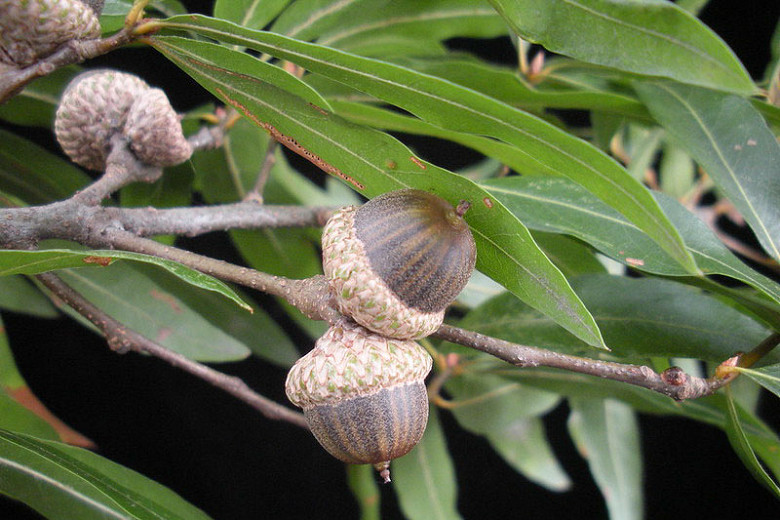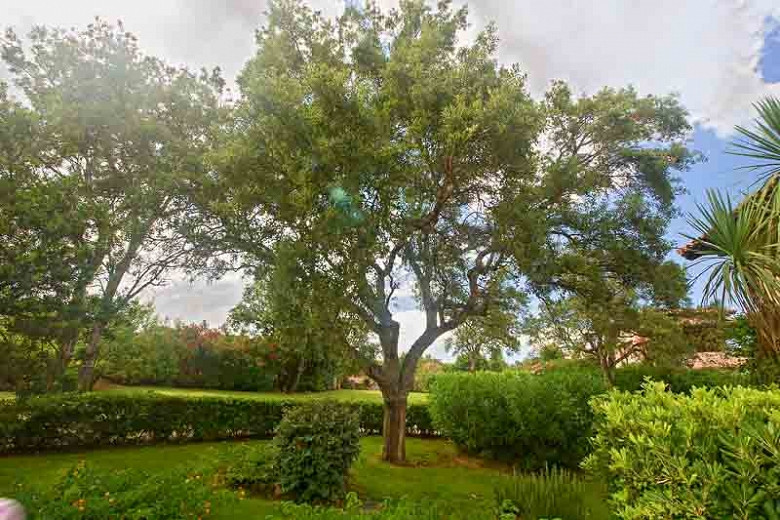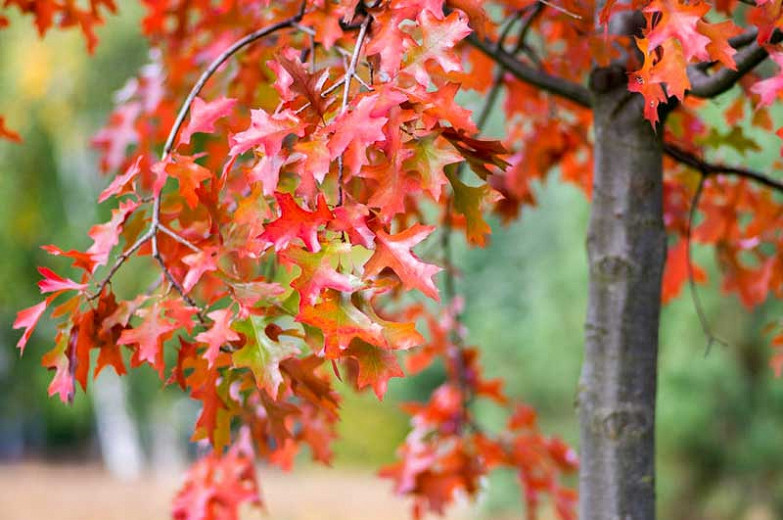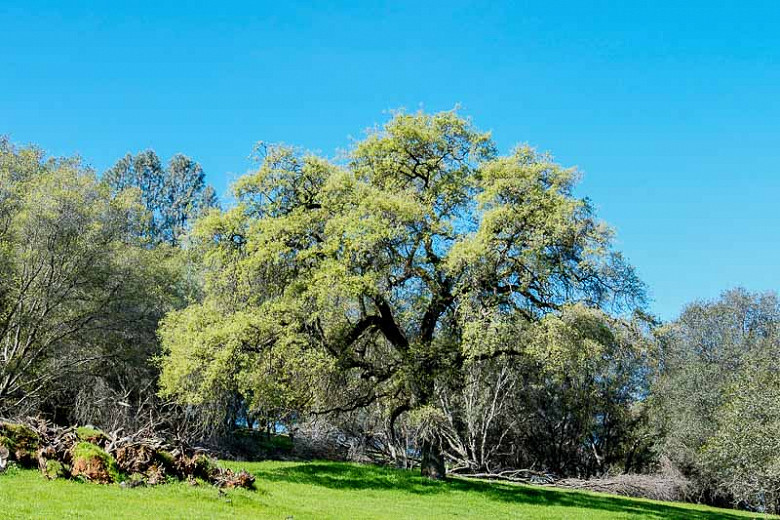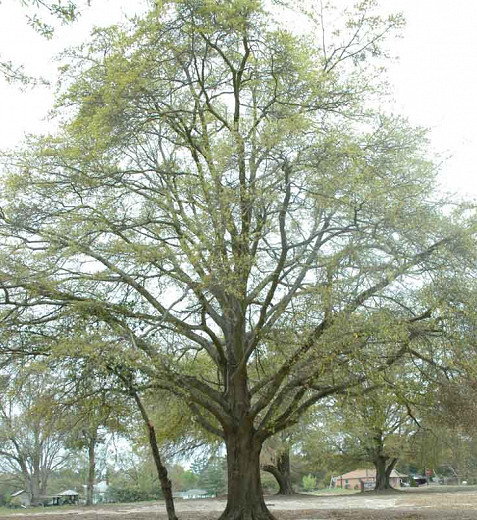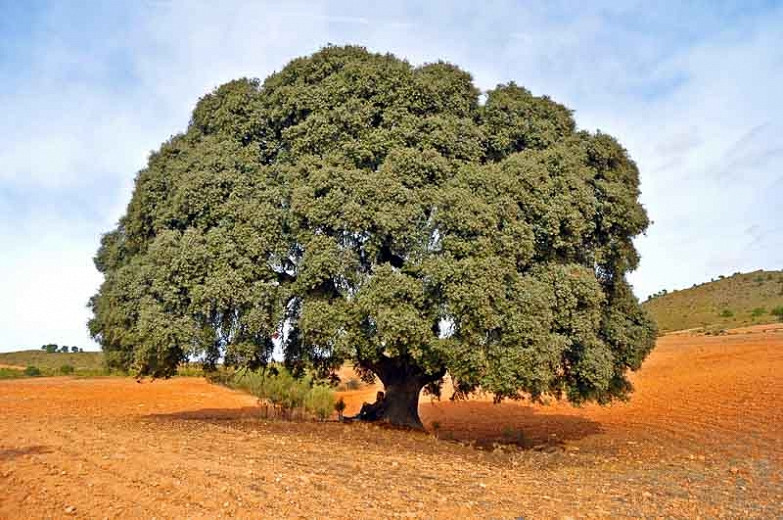Quercus laurifolia (Laurel Oak)
Quercus laurifolia (Laurel Oak) is a large, stately, semi-evergreen tree adorned with a dense, oval-rounded canopy. The trunk can reach 3-4 ft. (90-120 cm) in diameter and flares out at the base with age. Its gray bark is moderately deeply furrowed. The leathery, oval leaves, 2-4 in. long (5-10 cm), are green and glossy on top, somewhat paler and smooth underneath. They persist throughout the fall and most of the winter in warm coastal climates and are deciduous in cooler areas. Inconspicuous yellow-green catkins appear in spring. The oval acorns take two years to mature. They are a valuable source of food for small mammals and birds. Acorn production begins when the tree is 15 to 20 years old. Native to the southeastern United States, Laurel Oak occurs naturally in floodplains forests, on river banks, in swamps, and in upland depression wetlands, usually on sites with clay soils. Laurel Oak has been widely planted in the South as an ornamental, perhaps because of the attractive leaves from which it takes its common name. It is often used as a shade or street tree. It grows fairly rapidly and is not fussy about soils. It is however relatively short-lived (75-100 years), and often becomes hollow with age.
- Grows up to 40-60 ft. tall and wide (12-18 m).
- Performs best in full sun to part shade in rich, humusy, acidic, medium to wet, well-drained soils. Tolerates a wide range of soils, including clay soils.
- Perfect as a specimen plant.
- Keep an eye out for oak wilt, chestnut blight, shoestring root rot, anthracnose, oak leaf blister, cankers, leaf spots, powdery mildew, scale, oak skeletonizer, leaf miner, galls, oak lace bugs, borers, caterpillars and nut weevils.
- Propagate by seed (no treatment). Best quality acorns are picked or shaken from the tree.
- Toxic to horses.
- Native to the southeastern United States from coastal Virginia to central Florida and west to southeast Texas.
Requirements
| Hardiness | 7 – 10 |
|---|---|
| Plant Type | Trees |
| Plant Family | Quercus – Oaks |
| Exposure | Full Sun, Partial Sun |
| Season of Interest | Spring (Early,Mid,Late)Summer (Early,Mid,Late)FallWinter |
| Height | 40' – 60' (12m – 18m) |
| Spread | 40' – 60' (12m – 18m) |
| Water Needs | Average, High |
| Maintenance | Low |
| Soil Type | Clay, Loam, Sand |
| Soil pH | Acid, Neutral |
| Soil Drainage | Moist but Well-Drained, Moisture Retentive |
| Characteristics | Showy, Semi-Evergreen |
| Native Plants | United States, Northeast, Maryland, Pennsylvania, Southeast, Alabama, Arkansas, Florida, Georgia, Louisiana, Mississippi, North Carolina, South Carolina, Virginia, Southwest, Texas |
| Tolerance | Clay Soil |
| Garden Styles | Prairie and Meadow |
